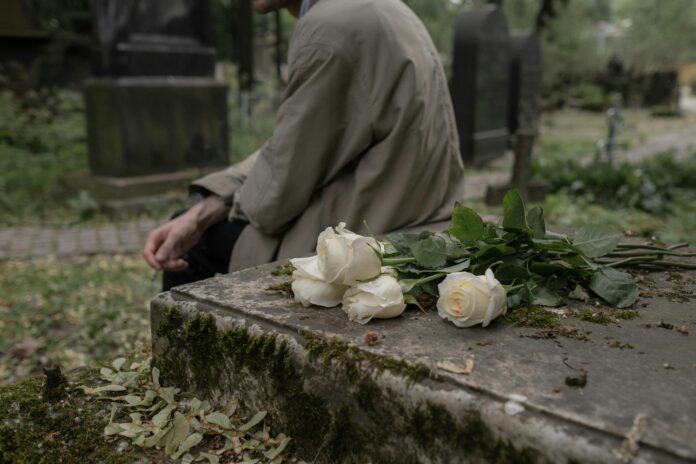With the rise in environmental movements worldwide, there is an increasing focus on the ecological impacts of our lifestyles. This concern extends to our end-of-life choices, leading to a growing interest in green burials. Going mainstream in 2005, green burials involve the use of biodegradable caskets, urns, or shrouds and encourages land conservation—practices that Muslims have adhered to for the last 1400 years.
Muslim burial procedures are strongly founded in religious traditions, with a distinct structure designed to honor the deceased. These customs include a quick burial, minimal grave markings, and the use of natural materials to ensure the body is returned to the ground in a respectful manner.
Funeral (Janazah) Principles in Islam
Islam guides Muslims through life and death using rulings from the Qur’an, the Prophet Muhammad’s (pbuh) traditions (referred to as Sunnah), and Islamic jurisprudence (Fiqh). Death is acknowledged as an inevitable part of one’s soul, with specific practices to honor the deceased. The Qur’an reminds believers of death’s certainty and the afterlife’s promise:
Every soul will taste death. And you will only receive your full reward on the Day of Judgment. Whoever is spared from the Fire and is admitted into Paradise will ˹indeed˺ triumph, whereas the life of this world is no more than the delusion of enjoyment.
(Quran, Surah Al-Imran: 185)
Islamic funeral practices, outlined in five stages, emphasize swift burial, respect, and minimal disturbance to the body, including many elements suggested for a green burial.
1. Confirmation and Washing of the Body: After confirming death, the deceased is cleansed on an inclined platform. Rituals like ablution are performed using clean, preferably scented, warm water, while ensuring modesty with proper covering.
2. Shrouding of the Body: Men are wrapped in three pieces of white cloth, women in five, with specific layers and sequences to maintain dignity even after burials.
3. Congregational Prayer: A prayer seeking pardon for the deceased follows, held at the masjid and attended by as many Muslims as possible for greater rewards.
4. Funeral Procession: The body is carried calmly and respectfully to the cemetery, with mourners walking in silence, avoiding music or excessive weeping.
5. Burial: Graves are simple, facing the Qiblah, with the body placed on its right side. Elaborate grave markings and rituals are avoided to maintain humility. The burial occurs locally and as soon as possible, with coffins used only if required by local laws.
Islam discourages the long-distance transportation of the deceased, preserving environmental resources otherwise spent in transportation. Not only does this reduce the carbon footprint associated with long-distance transport, but it also additionally reinforces a sense of community within the local environment. Likewise, Islamic funeral practices discourage playing music during processions, thereby reducing noise pollution and maintaining the solemnity of the occasion.
The conservation of resources extends to the burial site. Islam emphasizes avoiding the use of coffins, cement for plastering and building sophisticated tombs. This promotes natural decomposition while supplementing the soil, supporting the local ecology and aiding the survival of other vital species. Beyond the important value to the environment, these hybrid practices also hold significant symbolic meaning. Demonstrating a profound recognition for the interconnectedness of life and the environment, and understanding even in death, the effect on the planet is profound.
How Other Burial Practices Compare
China, the world’s most populous country, had nearly six million bodies cremated in 2021, burned in 7,000 thousand crematories in the country. This translates to about 58% of the deaths ending in cremation. This widespread cremation process greatly exacerbates the emission of many kinds of hazardous air pollutants (HAPs), further highlighting concerns about air quality in the region and health risks to the local population. A thorough emission data collection of these pollutants was created for the period 1990-2012, and future emissions patterns up to 2030 are estimated and according to the analysis, overall emissions would continue to rise steadily. Furthermore, HAP emissions are projected to increase by 3% annually until 2030.
Read More: Reclaiming Zuhd: Embracing Minimalism in a Wasteful World
The burial of caskets with arsenic-treated wood and formaldehyde-based embalming fluids can also further harm the environment. Arsenic and formaldehyde can leak into ground water, affecting aquatic life and risking polluting drinking water. Even the most basic of Western burial processes run the risk of harming the environment. This differs vastly from objects Islam promotes using during burials. Ḥanūṭ has been used in the time of the Prophet Muhammad (pbuh), referring to the use of oil or natural ingredients to cleanse and slow the decomposition process. The mixture could have ingredients like lime, sandalwood, camphor, and other plant oils. Muslims also do not typically use caskets at all, many of which have been treated with harmful chemicals. Today some Muslims use a casket-like box to carry the body to and from the burial site, but typically refrain from putting the box underground.
In order to continue the commonality Muslims have in burial processes, there must be intentionality behind preserving the tradition and ensuring any new materials introduced to the process coincide with Islamic law.
How Can Islamic Burials be Made to be More Green?
One of the most encouraging developments in the field is the use of biodegradable shrouding materials. In recent years, some newer shrouding practices often involve materials that are not environmentally friendly, such as the rise of synthetic fabrics replacing natural ones that are biodegradable. Materials like cotton offer an alternative that supports both traditional and ecological values.
Read More: 10 Must-Reads on Climate, Environment & Islam
A natural fiber, cotton decomposes more readily in the soil, minimizing the environmental impact of the burial process. The principle of simplicity in Islamic funerals also extends to this process. Every Muslim, regardless of social status, is shrouded in plain white cloth, devoid of sewing, cosmetics, or jewelry. This uniformity highlights equality and removes the environmental impact linked to creating and disposing of elaborate burial clothing. The use of these plain, unadorned shrouds ensures that the decomposition process is unhindered, facilitating the natural return of the body to the earth.
Involving Communities In Keeping the Tradition of Islamic Burials Alive
Change, even for environmental benefits, can be met with resistance, especially within communities deeply rooted in tradition. Educating the community about the environmental impact of current practices and the benefits of sustainable alternatives is crucial. Religious leaders and scholars play a pivotal role in this, as their endorsement can significantly influence community acceptance. Ensuring that any changes are in strict accordance with Islamic principles is vital to maintaining religious observance and community trust.
As modern environmental concerns grow, adapting these traditional methods while ensuring community acceptance and adherence to Islamic principles is essential. By balancing tradition with sustainability, Islamic burial rituals provide a meaningful example of how cultural and religious practices can contribute positively to environmental stewardship.
Additional research by Halima Salah.



